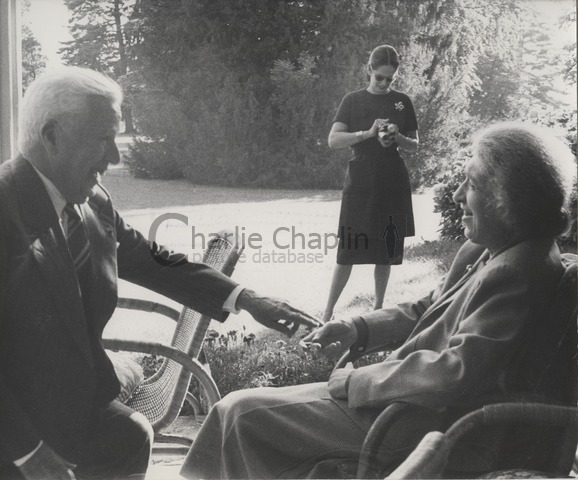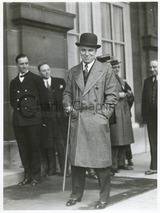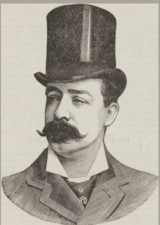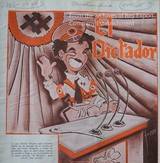Chaplin & Music
A Music-Hall childhood
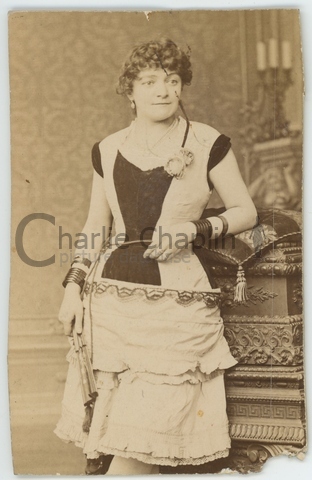
Charles Chaplin recalled that in his early childhood his mother, a music-hall singer, would take him with her to the theatre, where he would stand in the wings listening to her and the other acts that made up the show:
“Mother usually brought me to the theatre at night in preference to leaving me alone in rented rooms.”
He also recalled seeing his father, a well known vocalist also called Charles Chaplin, perform at the Canterbury Music Hall; and recounted how at home, in the happier times, his mother would regularly entertain him and his step-brother by singing, dancing, reciting and imitating other artists. His own very first appearance on the stage, at the age of five, was precipitated when his mother was performing before a tough audience, mostly made up of soldiers, at the Aldershot Canteen. When her voice cracked and she was unable to continue, Charlie was pushed on in her place. Already a natural performer, it seems, he sang two current song success, pausing in between to pick up the coins thrown by the surprised and amused audience.
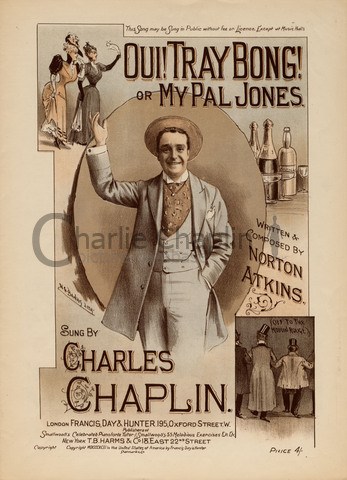
Aside from the experience of growing up surrounded by the songs of the music hall, Chaplin later often told the story of the revelatory day that “music entered my soul”. Returning home from school to an empty house, he waited for hours for someone to arrive, then wandered off into the streets, where:
“Suddenly, there was music. Rapturous! It came from the vestibule of the White Hart corner pub, and resounded brilliantly in the empty square. The tune was The Honeysuckle and the Bee, played with radiant virtuosity on a harmonium and clarinet. I had never been conscious of melody before, but this one was beautiful and lyrical, so blithe and gay, so warm and reassuring. I forgot my despair and crossed the road to where the musicians were. . . .It was here that I first discovered music, or where I first learned its rare beauty, a beauty that has gladdened and haunted me from that moment…“
In 1898, aged 9, Charlie began his own career in English music hall, with a troupe of juvenile clog dancers, “The Eight Lancashire Lads”.
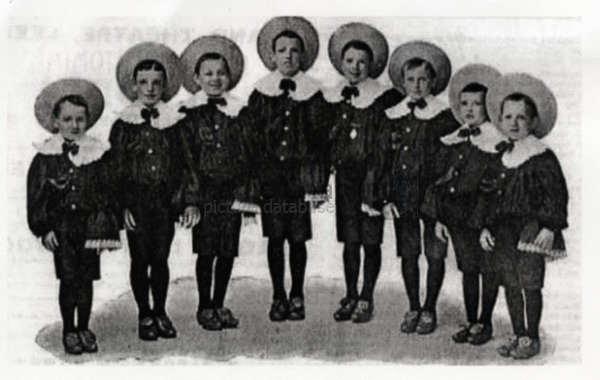
The Role of Music in the Karno Comedy Sketches
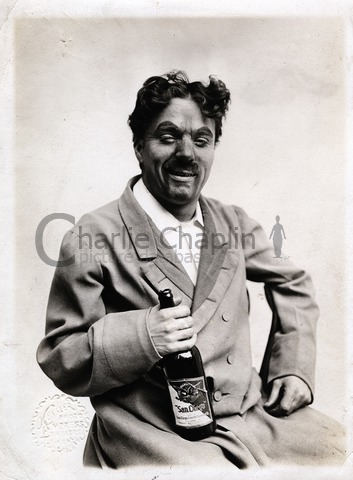
He was to remain in the theatre, alternating various jobs and periods of unemployment, until he ended up as one of the stars of Fred Karno’s comedy sketch companies. With Karno’s companies he went to America to tour vaudeville circuits that spanned the continent. His powerful response to music clearly influenced his comic pantomime, which from the start was marked by a strong rhythmical and balletic character.
Music played an important part in the Karno comedy sketches, which achieved, for example, effective comic contrast by accompanying gross slapstick with delicate 18th century melodies. Stan Laurel, a fellow Karno performer, recalled in an interview with John McCabe that during the 1912 US tour Charlie:
Carried his violin wherever he could. Had the strings reversed so he could play left handed, and he would practise for hours. He bought a cello once and used to carry it around with him. At these times he would always dress like a musician, a long fawn coloured overcoat with green velvet cuffs and collar and a slouch hat. And he’d let his hair grow long at the back. We never knew what he was going to do next.”
Chaplin himself recalled that:
“On this tour I carried my violin and cello. Since the age of sixteen I had practised from four to six hours a day in my bedroom. Each week I took lessons from the theatre conductor or from someone he recommended. As I played left handed, my violin was strung left handed with the bass bar and sounding post reversed. I had great ambitions to be a concert artist, or, failing that, to use it in a vaudeville act, but as time went on I realised that I could never achieve excellence, so I gave it up.” In the book “My Life in Pictures” Chaplin wrote ironically: “As for the cello, I could pose well with it but that’s about all.”
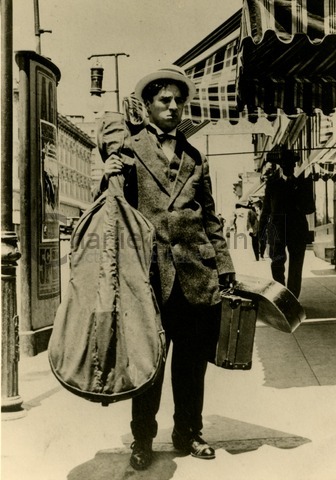
In Paris at the Folies Bergère, Debussy asked to meet Chaplin - still barely 20 years old - after seeing the Karno show, and told him : “You are instinctively a musician and a dancer”. At the time, Charlie had no idea who was paying him such a compliment, but in his autobiography remarked that it was the very year “Debussy introduced his Prélude à L’Après Midi d’un Faune to England, where it was booed and the audience walked out”.
The Charles Chaplin Music Company
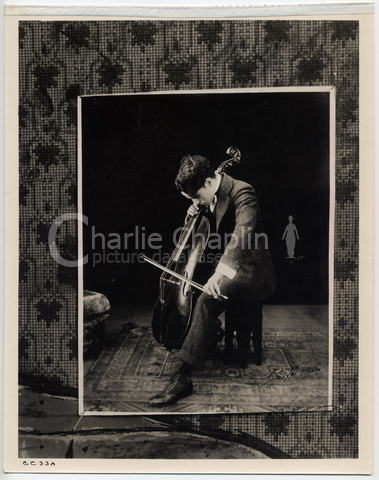
At the end of 1913, Chaplin left Karno to remain in America and work in moving pictures. At one point in his early career he went to the Metropolitan Opera House in New York to see Tannhäuser.
“I had never seen grand opera, only excerpts of it in vaudeville - and I loathed it. But now I was in the humour for it. I bought a ticket and sat in the second circle. The opera was in German and I did not understand a word of it, nor did I know the story. But when the dead Queen was carried on to the music of the Pilgrim’s chorus, I wept bitterly. It seemed to sum up all the travail of my life. (…) I came away limp and emotionally shattered.”
In his film work, music remained ubiquitous:
“ Simple little tunes gave me the image for comedies. In one called 20 Minutes of Love, full of rough stuff and nonsense in parks, with policemen and nursemaids, I weaved in and out of situations to the tune of Too Much Mustard, a popular two step in 1914.”
Soon Chaplin’s fame was so great that he himself became the subject of vaudeville songs: “Ziegfeld Follies Girls were doing Chaplin numbers, marring their beauty with moustaches, derby hats, big shoes and baggy trousers, singing a song called Those Charlie Chaplin Feet.”

While working with the Mutual Film Company he was delighted to have the opportunity to meet such prominent musicians as Paderewski and Leopold Godovsky. In 1916 he even set up his own music publishing company in association with Bert Clark, an English vaudeville comedian:
“We had rented a room three storeys up in a down town office building and printed two thousand copies of 2 very bad songs and musical compositions of mine - then we waited for customers. The enterprise was collegiate and quite mad. I think we sold three copies, one to Charles Cadman, the American composer, and two to pedestrians who happened to pass our office on their way downstairs.”
In fact the Charles Chaplin Music Company closed shop after publishing his first three compositions: “Oh! That Cello”, “There’s Always One you Can’t Forget”, and “The Peace Patrol”. Film remained his most important concern, and in 1918 he built his own studios where he could exert total production control.

Chaplin Composes His Own Scores
He frequently wrote theme songs which were published to coincide with the release of the films. Notably, when The Gold Rush was released, he recorded its theme songs with the Abe Lyman Orchestra.
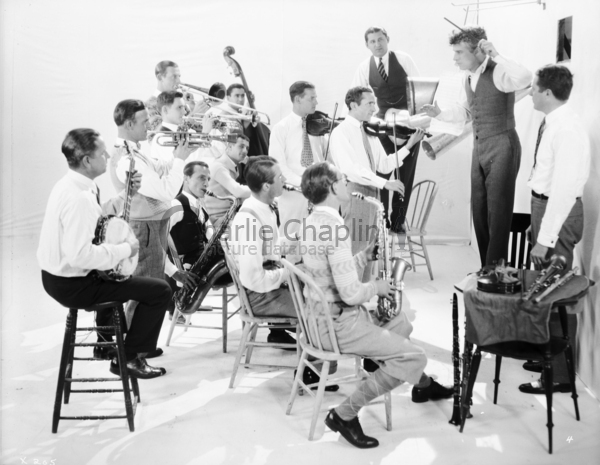
In the silent period it was usual to commission professional arrangers to devise suitable musical accompaniments for major films. These were generally compiled from published music, and then performed live by whatever instrumental combinations each individual cinema could afford.
At least as early as A Woman of Paris (1923), however, Chaplin was involving himself closely in the musical accompaniment for his films. The coming of talking pictures found Chaplin understandably reluctant to abandon the universally understood medium of pantomime, but:
“One happy thing about sound was that I could control the music, so I composed my own. I tried to compose elegant and romantic music to frame my comedies in contrast to the tramp character, for elegant music gave my comedies an emotional dimension. Musical arrangers rarely understood this. They wanted the music to be funny. But I would explain that I wanted no competition, I wanted the music to be a counterpoint of grave and charm, to express sentiment, without which, as Hazlitt says, a work of art is incomplete. Sometimes a musician would get pompous with me and talk of the restricted intervals of the chromatic and the diatonic scale, and I would cut him short with a layman’s remark; ‘Whatever the melody is, the rest is just a vamp.’ After putting music to one or two pictures I began to look at a conductor’s score with a professional eye and to know whether a composition was over-orchestrated or not. If I saw a lot of notes in the brass and woodwind section, I would say: “That’s too black in the brass,” or “too busy in the woodwinds”. Nothing is more adventurous and exciting than to hear the tunes one has composed played for the first time by a fifty piece orchestra.”
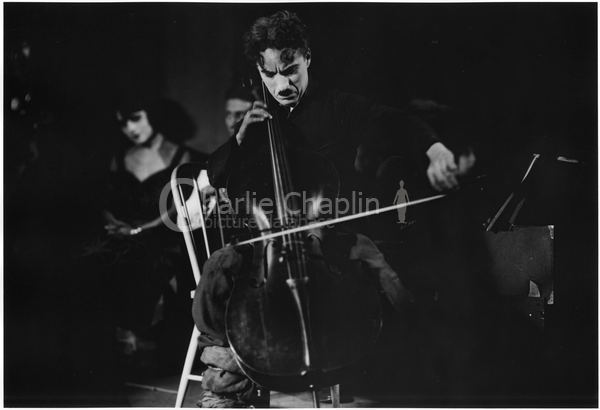
In 1940, talking about the music for The Great Dictator, Chaplin said in an interview:
“Film music must never sound as if it were concert music. While it actually may convey more to the beholder-listener than the camera conveys at a given moment, still it must be never more than the voice of that camera”.
His musical arranger at the time, Meredith Willson, said of him:
“I have never met a man who devoted himself so completely to the ideal of perfection as Charlie Chaplin. (…) I was constantly amazed at his attention to details, his feeling for the exact musical phrase or tempo to express the mood he wanted… Always he is seeking to ferret out every false note however minor from film or music”.
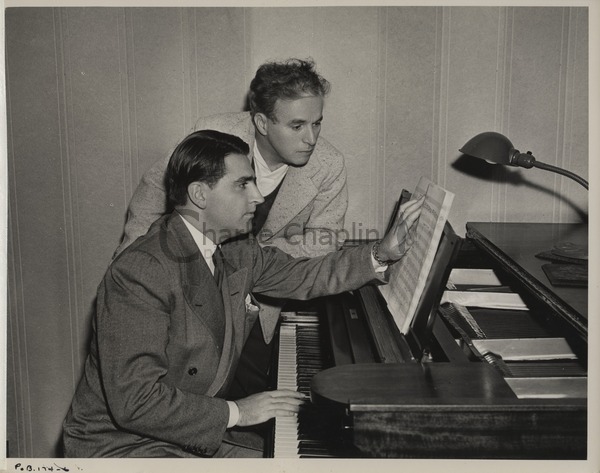
During his American career, Chaplin counted among his friends and acquaintances many well known composers and musicians, among them Rachmaninov, Horowitz, Stravinsky, Hanns Eisler, and Schoenberg…
“After seeing my film Modern Times, he told me that he enjoyed the comedy but my music was very bad”). Later, in his Autobiography, he paid this compliment to them :
“Writers are nice people but not very giving; whatever they know they seldom impart to others; most of them keep it between the covers of their books. Scientists might be excellent company, but their mere appearance in a drawing room mentally paralyses the rest of us. Painters are a bore because most of them would have you believe they are philosophers more than painters. Poets are undoubtedly the superior class and as individuals are pleasant, tolerant and excellent companions. But I think musicians in the aggregate are more cooperative than any other class. There is nothing so warm and moving as the sight of a symphony orchestra. The romantic lights of their music stands, the tuning up and the sudden silence as the conductor makes his entrance, affirms the social, cooperative feeling.”
Even though he could never actually write down music on paper, he continued to work with dedication on the music for all his films. Of the score of City Lights he said:
“I really didn’t write it down, I la-laed and Arthur Johnston wrote it down. (..) It is all simple music, you know, in keeping with my character.”
According to the composer-conductor Timothy Brock, who has restored and conducted a number of Chaplin scores:
“Although untrained in traditional western musical notation, Chaplin was nevertheless a gifted musician with an innate sense of musical construction. Though he engaged different arrangers and orchestrators to notate his thematic material, his gift for melody and harmony, and his ability to accompany action perfectly, remain a germinal voice identifiable throughout his films. Like his famous character, his scores employ a perfect balance of comedy, pathos and skill.”
In 1942 he returned to the 1925 The Gold Rush replacing the inter-title cards of the silent film with his own voice-over narration, and adding a musical score. Later he took obvious pleasure in creating the pastiches of Edwardian music hall songs and acts for Limelight and, in contrast, writing parodies of 50s “pop” songs for A King in New York.The love for pastiche and parody is not limited to the music - his lyrics too are full of humour and word-play, for example, “I don’t want to be a tree, sticking in the ground, I’d rather be a flea”, “If I could only find a will to get away” or “I despise you, idolise you, I adore you, I implore you…” The infinite pleasure to be found in listening to these songs no doubt stems from the pleasure Chaplin clearly took in writing them. Later in his life, by this time living in Switzerland, he composed and recorded music for all his films made between 1918 and 1923. The Chaplin family archives hold many audio tapes of Chaplin working alone on the piano, improvising and humming as he composed. He once said that even if he did not remember how a tune went, he could remember the pattern it made on the black and white notes of the keyboard.
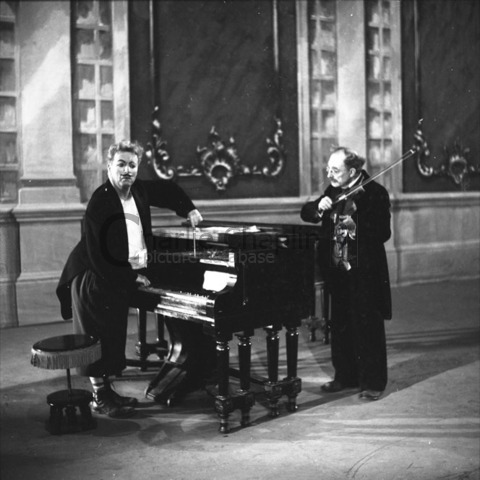
In his family home in Switzerland, Chaplin continued to the end of his life to develop his love and knowledge of music and to entertain musicians, among them Arthur Rubinstein, Isaac Stern, Rudolf Serkin, and Clara Haskil. His daughter Josephine has nostalgic memories of how, regularly after supper, he would insist that the lights were turned off, and that the family listen by candle-light to record after record of classical music.
Music had, indeed, “entered his soul”.
